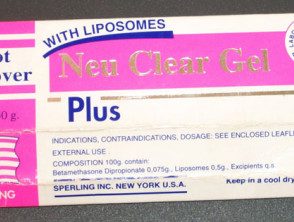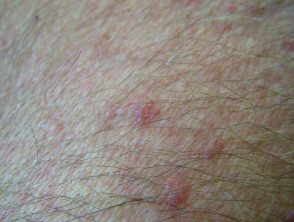Introduction
Skin whitening or lightening creams or ointments are widely used throughout the world to try to remove located dark spots (eg, melasma or post-inflammatory hyperpigmentation) or as a fashion trend with the aim of reducing normal melanin on the skin
What do whitening creams contain?
a whitening cream It can contain a variety of ingredients. Some of these are more effective than others. In many areas, unregulated products are sold, often without their contents listed or mislabeled. They may be safe but completely ineffective, or the chemicals may cause side effects and toxicity. The risks depend on which ingredient is applied to the skin, in what concentration, on what area, and for how long it is used.
Skin lightening agents may include:
- Hydroquinone
- Cysteamine
- Current retinoids
- botanicals
- other agents
- Topical corticosteroids
-
Mercury.
Hydroquinone
Hydroquinone is an effective skin lightening agent. It is no longer available in some parts of the world due to the damaging effects of long-term use. The recommended concentration on the counter is from the 2%, but up to a 4% is available from a dermatologist in some countries. It should be used daily for no more than 6 months.
Its initial inhibition effect pigmentation is lost with prolonged application and solar stimulation.
exogenous Ochronosis is the main risk of continuous use of hydroquinone. This results in an irregular blue-black spot that affects the sun.exposed skin and nail. It is due to deep statement Of the same pigment What happens in alkaptonuria?endogenous ochronosis). Exogenous ochronosis can also occur from phenol, quinine, or resorcinol.
Ochronosis can also lead to loss of skin elasticity and wound healing.
In some subjects, the excessive use of hydroquinone in combination with certain foods in the diet (fish, eggs, offal, beans) can cause an unpleasant fishy odor in body secretions, such as sweat and urine (trimethylaminuria).
Hydroquinone is sometimes called by another name, such as:
- 1,4-benzenediol
- Quinol
- benzene-1
- 4-diol
- p-diphenol
- p-dihydroxyl benzene
- Hydroquinone
- p-hydroxyphenol
- hydroquinonium
- hydroquinol
- Tequinol
Hydroquinone monobenzyl ether is a strong derivative of hydroquinone that almost always causes an almost irreversible effect depigmentation of the skin (white patches).
Topical retinoids
Tretinoin is the main topical. retinoid It has been used in skin lightening products. Dilutes the skin, increasing the penetration of other agents. in addition to having a direct effect in reducing melanization. It is a prescription medication due to the potential risk in pregnancy. It can be quite irritating and can cause contact. irritating dermatitis.
Cysteamine cream
Cysteamine cream is applied for 15 minutes each day for up to 12 weeks, then twice weekly for maintenance. May cause temporary burning and redness, and may also cause dryness and irritation, relieved by application of a emollient.
botanicals
New skin-lightening active compounds isolated from plants are being added to modern cosmetics. They look like inhibit the production of melanin without being toxic to the melanocyte (tyrosinase inhibitors) It is not yet known which preparations are the most effective. Active ingredients include:
- Arbutin al 1% (a glycosylated hydroquinone)
- Paper mulberry 1%
- Glabridin 0.5% (Licorice extract)
- Arctostaphylos patula and Arctostaphylos viscida
- Aloesin
- gentisic acid
- Flavonoids
- Hesperidin
- Ascorbic acid or its derivative, magnesium ascorbyl phosphate 10%
- Niacinamide
- Yeast derivatives
- polyphenols
- Soy proteins.
other agents
Other agents in use for their skin lightening effect include:
-
Azelaic acid 20%, produced by the yeast Malassezia
- Kojic acid 1-4% (5-hydroxy-4-pyran-4-one-2-methyl), produced by a fungus (may cause contact irritation or allergic contact dermatitis)
- Mequinol 5-20% (4-hydroxyanisole)
- isopropylcatechol
- N-acetyl-4-cysteaminylphenol
- N-acetyl glucosamine
- Piceatannol
Unregulated skin lightening creams may include many other ingredients. These can be relatively safe (for example, lemon juice), toxic (camphor), irritating (detergents), or can cause allergy (hair Colorant). Complications can include:
- Irritant contact dermatitis
-
Allergic contact dermatitis.
Topical corticosteroids
Dermovate Cream Dermovate CreamSteroid creams used to whiten skin color.


Topical corticosteroids lighten the skin by the following mechanisms.
- Initial pallor due to vasoconstriction
- Slow down the rate of skin cell turnover, which reduces the number and activity of melanocytes (pigment cells)
- Reduction of the production of precursor steroid hormones, thus reducing the production of melanocyte-stimulating hormone (MSH)
In New Zealand and many other countries, the stronger topical corticosteroids are regulated and can only be obtained by prescription. Products containing betamethasone valerate, fluocinonide, and clobetasol propionate can be purchased without a prescription at a pharmacy or from drug sellers in a market in other countries.
Strong topical steroids have a wide range of local side effects including thinning of the skin and atypical Fungal infections (tinea incognita). When used over large areas for prolonged periods, they may be at risk of serious internal disease from hypopituitarism. steroid addiction syndrome results in folliculitis and steroid rosacea.
Steroid Side Effects After Using Whitening Cream

Stretch marks

Folliculitis
Mercury
Mercury was used as mercurous chloride, oxide, and ammoniated mercury in many cosmetics and toiletries in the early 20th century before it was realized that it caused toxicity. It is still found in some skin lightening creams because the mercury inactivates the enzyme that leads to the production of melanin. These products should not be used and are illegal in many countries, including the US and New Zealand.
Long-term application of mercurial products to the skin darkens the skin and nails because mercury is deposited in the epidermis, hair follicles and dermis.
Mercury poisoning causes acute and chronic toxicity, including acrodynia, as well as neurological and kidney damage.

